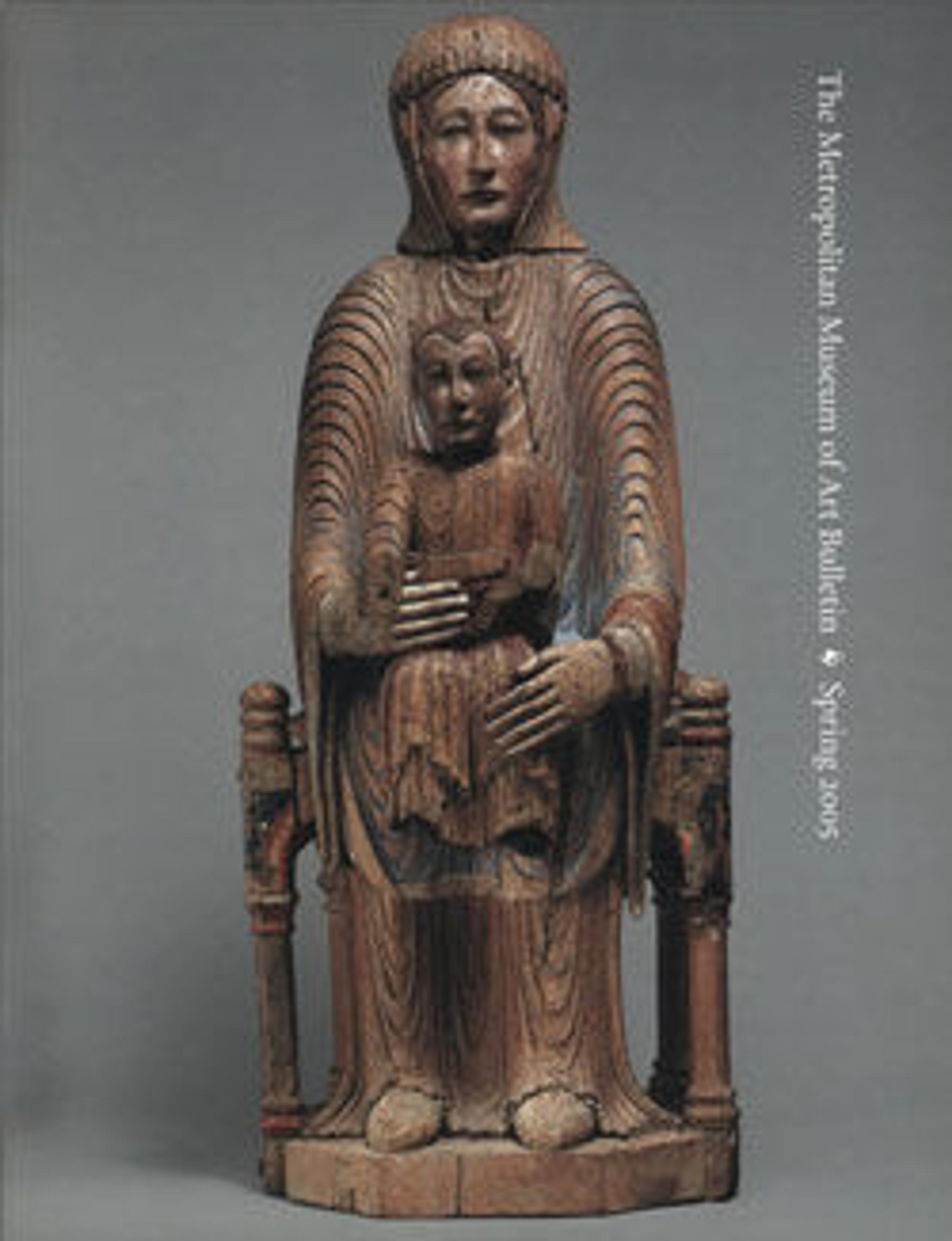The Priest Aaron
This sculpture of Aaron and the opposite figure of Moses form part of a rare ensemble of key figures from the Hebrew Bible. They symbolically prefigure the redemption offered through the sacrificial death of Christ, and with other statues originally flanked an enthroned Virgin and Child that still survives in the Gothic cathedral at Noyon. The sculptures are distinguished by garments of weighty fabric arranged in swelling volumes stretched around the body. Here, the Levite priest Aaron covers his head with a veil and holds a scroll. After their removal from the cathedral in the wake of the French Revolution, the sculptures were affected by different environmental conditions.
Artwork Details
- Title: The Priest Aaron
- Date: ca. 1170
- Geography: Made in Noyon, Picardy (Oise)
- Culture: French
- Medium: Limestone
- Dimensions: Overall: 50 x 16 1/2 x 13 1/2 in. (127 x 41.9 x 34.3 cm)
- Classification: Sculpture-Stone
- Credit Line: The Bequest of Michael Dreicer, 1921
- Object Number: 22.60.17
- Curatorial Department: Medieval Art and The Cloisters
More Artwork
Research Resources
The Met provides unparalleled resources for research and welcomes an international community of students and scholars. The Met's Open Access API is where creators and researchers can connect to the The Met collection. Open Access data and public domain images are available for unrestricted commercial and noncommercial use without permission or fee.
To request images under copyright and other restrictions, please use this Image Request form.
Feedback
We continue to research and examine historical and cultural context for objects in The Met collection. If you have comments or questions about this object record, please contact us using the form below. The Museum looks forward to receiving your comments.
